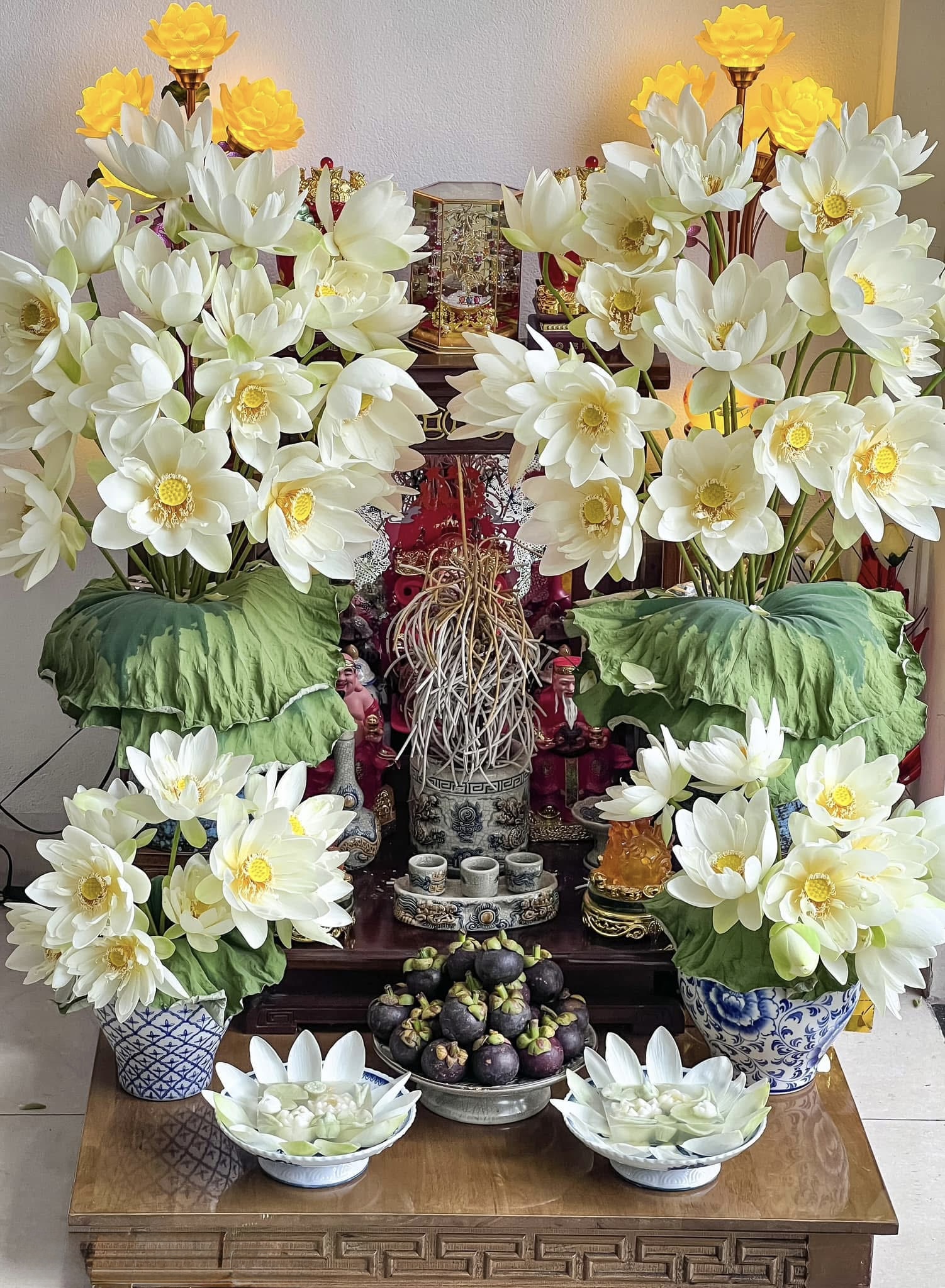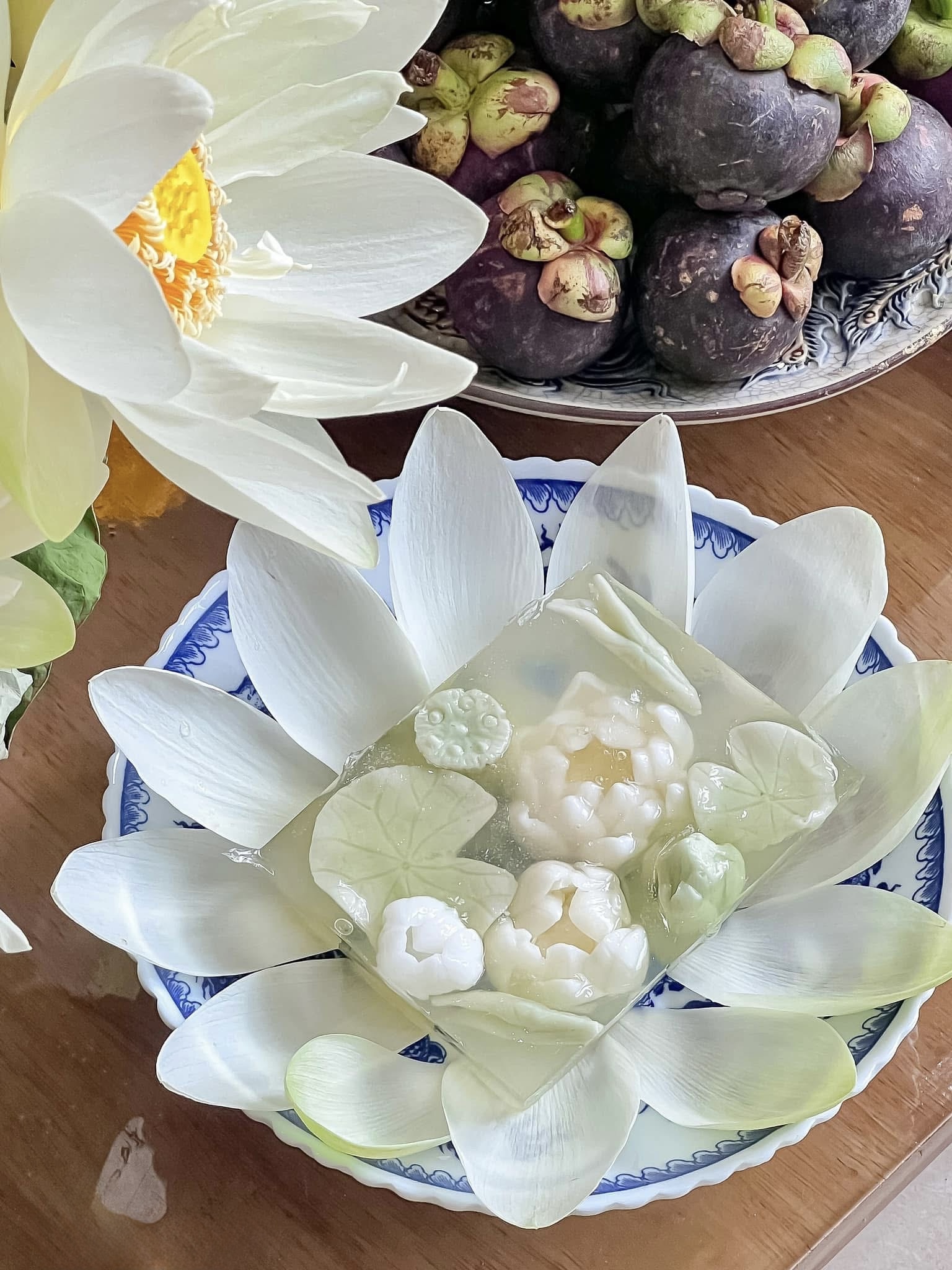
This ornate altar honors Thần Tài and Ông Địa, symbols of prosperity and protection. Adorned with lotus flowers and fruit, it reflects everyday devotion in Vietnamese homes and businesses, where spiritual faith meets hopes for fortune and stability.

Your wishlist is empty.
Worship in Vietnam is not just about faith—it is about relationship. A quiet bow before an altar, a small cup of tea, a flicker of incense—these are not just acts of religion, but deep cultural gestures of love, gratitude, and respect. From honoring ancestors to acknowledging gods of land and fortune, worship is a daily language that connects generations, homes, and the unseen.
At the heart of Vietnamese worship is the belief that the spiritual world is always close. The family altar isn’t a decoration—it’s a space where the living and the dead meet. It’s where grandparents are remembered, spirits are greeted, and fortunes are quietly asked for. Unlike formal ceremonies, worship happens daily—through offerings of food, tea, water, or even thoughts.
It’s a way to center the day. To slow down. To remember that one’s life is built on many others—parents, ancestors, even nature itself. This act of remembrance fosters humility, grounding, and an invisible support system that many Vietnamese carry with them, no matter where they go.
Every item on the altar has purpose. A bowl of rice reflects nourishment and gratitude. A lotus flower honors purity and rebirth. Incense acts as a bridge between worlds—its rising smoke believed to carry wishes to the heavens. Even simple offerings like tea or fruit represent mindfulness, care, and a wish to give back what one receives in life.
In many homes, you’ll find statues or altars to Thần Tài (God of Wealth) and Ông Địa (Earth God), especially in businesses. Their presence shows how worship isn’t limited to religion—it blends spirituality with everyday aspirations for stability, luck, and harmony.

This ornate altar honors Thần Tài and Ông Địa, symbols of prosperity and protection. Adorned with lotus flowers and fruit, it reflects everyday devotion in Vietnamese homes and businesses, where spiritual faith meets hopes for fortune and stability.

What surprises many is how flexible Vietnamese worship can be. It exists in grand pagodas and in tiny kitchen shelves. It adapts across generations—what grandparents do with full offerings, younger people may express through a single incense stick or a whispered thought before bedtime.
Even without a full altar, many find ways to stay connected. A cup of coffee offered to a late father. A silent bow before a journey. Worship is not about perfection—it’s about intention. And in this way, it continues to live on, even in the busiest of lives.
Worship in Vietnam is both cultural memory and present comfort. It teaches that one is never alone—that strength comes not only from within, but also from above, behind, and beyond. Whether practiced daily or during special moments, it offers stillness, clarity, and a way to stay rooted in something greater than the self.
In its simplest form, worship is a moment of care: for others, for the world, and for one’s own soul.
Worship has adapted alongside Vietnam’s rapid change. In apartments, a shelf with a photo and incense replaces a full altar. In offices and shops, small statues of Thần Tài rest beside cash drawers. Some light incense through a phone app when far from home. These evolving forms may look different, but the meaning remains: to stay connected, to express respect, and to carry tradition forward—quietly, personally, and with intention.